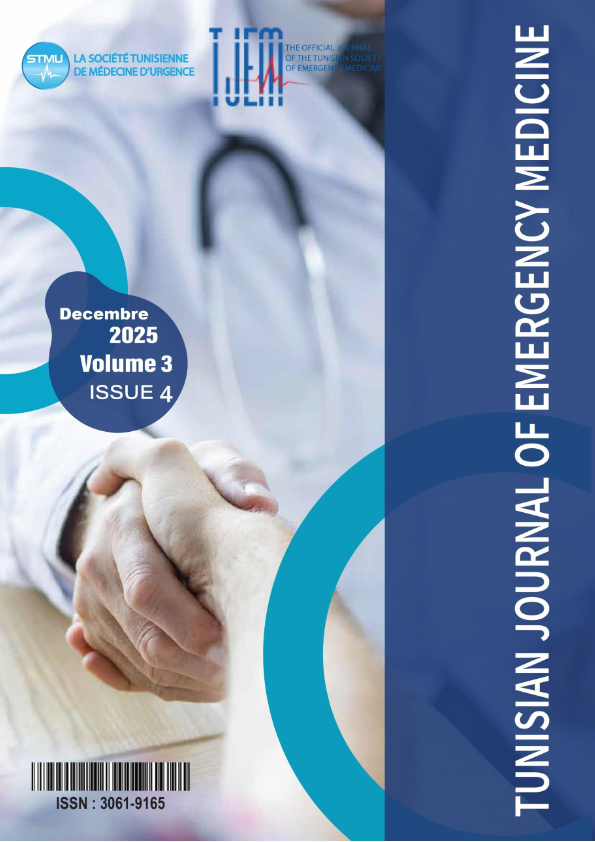
About the Journal
About the TJEM
Birth, in March 2017, of the first official journal of the STMU, TJEM: the Tunisian Journal of Emergency Medicine - with:
Anouar Yahmadi, Mohamed Habib Grissa, Abdelwaheb Morjane, Hamdi Boubaker, Asma Zorgati, Lotfi Boukadida, Rym Grami Hamed, Samir Abdelmoumen, Naoufel Somrani, Zohra Dridi, Hanene Ghazali, Kaouthar Beltaief, Nebiha Borsali, Zied Mezgar, Riadh Boukef, Mounir Naïja, Wahid Bouida, Samia Hafi Ep Abdessadok, Majdi Omri and Sami Souissi.
The TJEM is the official journal of the Tunisian Society of Emergency Medicine. It is a peer-reviewed journal aimed in particular at supporting emergency care. The TJEM publishes original research, reviews, brief reports of scientific investigations, case reports as well as commentary and correspondence related to topics of scientific, ethical, social, and economic importance to emergency care.
Since 2025, four issues are published per year.
The ISSN of the TJEM is: 3061-9165
Current Issue

Published: 25-12-2025
Full Issue
Case Reports
-
Dr Kessentini Hana, Dr Fedi Ben ali, Dr Rim karray, Dr Emna Gharbi, Dr Roua Mahjoub, DR Mouna Jerbi, Dr Olfa Chakroun, Dr Nouredine Rekik
-
Fedi Ben Ali, Rim Karray, Racem Mnif, Hana Kessentini, Mohamed Rebai, Yosra Mzid, Abdessalem Hentati, Khaireddine Ben Mahfoudh, Olfa Chakroun, Noureddine Rekik
Review
-
Neila MAAROUFI, sirine neji, ihsen abdeslem
Prospective study
-
Hela ben turkia, Syrine Keskes, Ines Chermiti, Raja Fadhel, Amel Ben Garfa, Amira Tagougui, hanene ghazali, Sami Souissi
-
Hela ben turkia, Firas chabaane, Syrine Keskes, Ines Chermiti, Rahma Dhokkar, Yosra Majdoub, hanene ghazali, Sami Souissi
-
Wiem Feki, Fatma Hammami, Amina Kammoun, Emna Daoud, Makram Koubaa, Zaineb Mnif
Retrospective or cross-sectional study
-
Dr.Rania AMMAR ZAYANI, Dr. Jihen Bach Hamba, Dr. Marwa Ben Abdallah, Dr. Nedia Bjaoui, Dr. Mabrouk Bahloul, Dr. Adel Chaari, Dr.Chokri Ben Hamida

